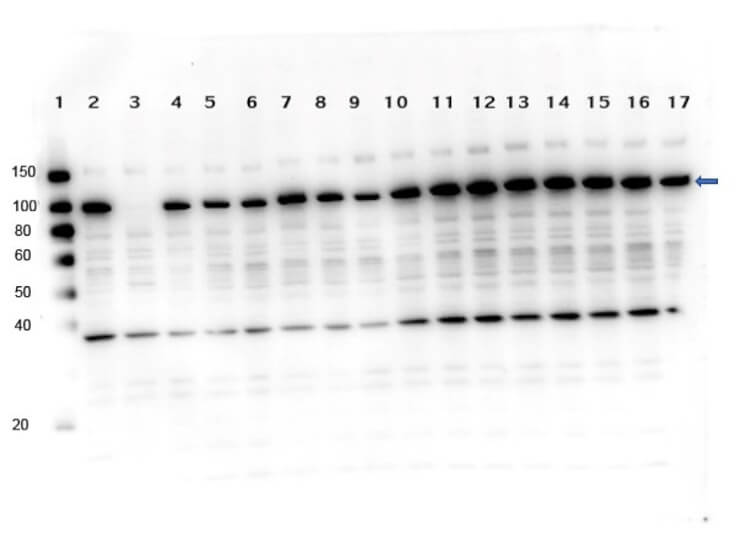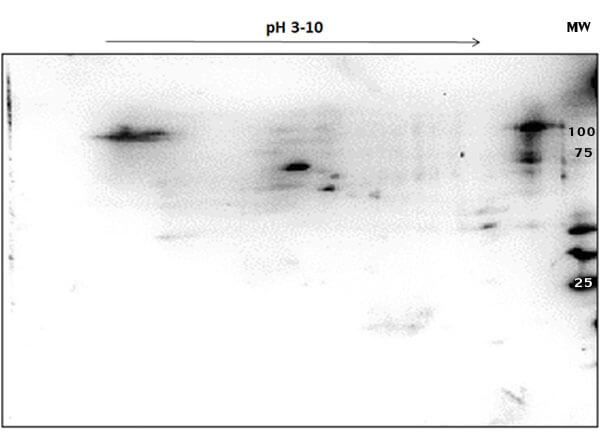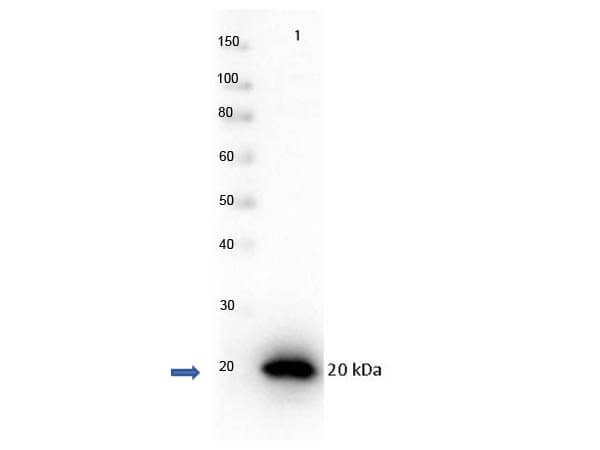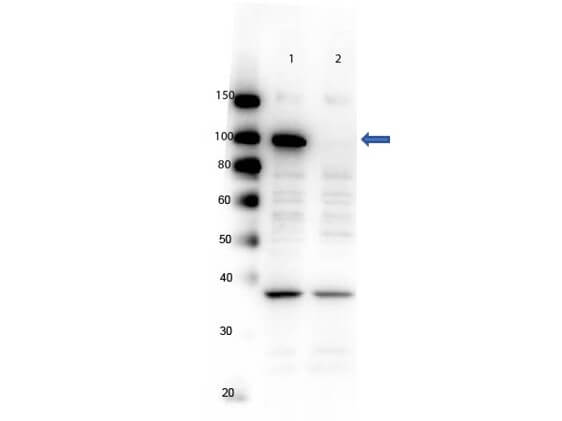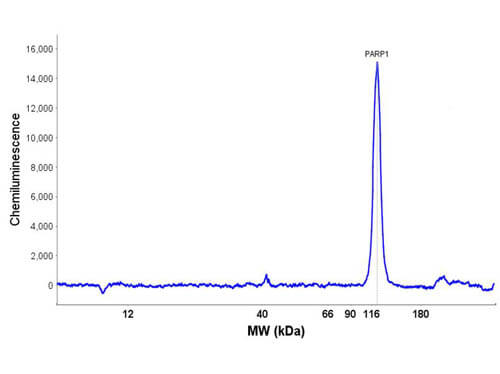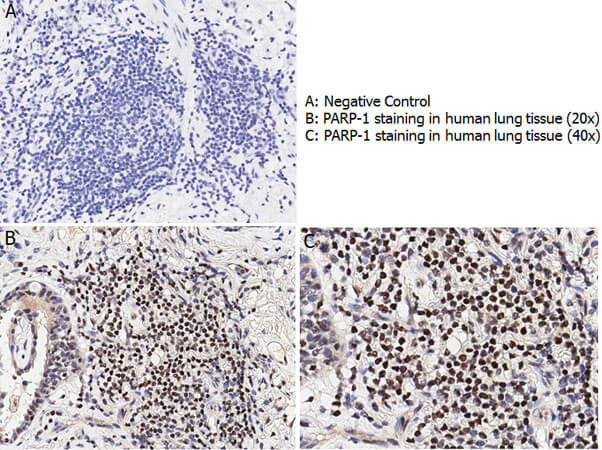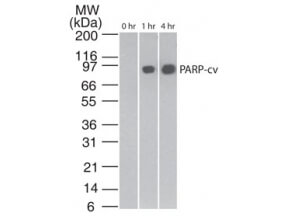Datasheet is currently unavailable. Try again or CONTACT US
PARP1 (internal) Antibody Set
Rabbit Polyclonal
KCC-X51
1 Set
Liquid (sterile filtered)
WB
Human
Rabbit
This product is discontinued
View alternative product
Product Details
PARP1 (internal) Antibody Set - KCC-X51
Poly [ADP-ribose] polymerase 1, ADP-ribosyltransferase diphtheria toxin-like 1, ARTD1, NAD(+) ADP-ribosyltransferase 1, ADPRT 1, PPOL, primary and secondary antibody pair, Primary+Secondary pair, matched antibody pair
Rabbit
Polyclonal
IgG
Combo Pack
Target Details
PARP1 - View All PARP1 Products
Human
Recombinant Protein
PARP1 (internal) purified antibody was prepared from whole rabbit serum produced by repeated immunizations with c-terminus region of human PARP1 autocatalytic domain recombinant protein.
Anti-Rabbit IgG HRP secondary antibody was produced by repeated immunizations in goat with Rabbit IgG whole molecule.
This PARP1 Antibody Set contains: PARP1 (internal) protein, Rabbit Anti-PARP1 Antibody, and Goat Anti-RABBIT IgG (HRP) Antibody.
PARP1 (internal) is a c-terminus His-Tag recombinant protein expressed in E.coli corresponding to a fragment of the human PARP1 autocatalytic domain. Rabbit Anti-PARP1 (internal) was purified from monospecific antiserum by immunoaffinity chromatography using protein A coupled to agarose beads. This antibody is specific for human PARP1 protein. No cross reactivity detected towards other PARP members when using siRNAs against 18 PARP family members. Cross-reactivity with PARP1 from other sources has not been determined. Goat Anti-RABBIT IgG (H&L) Antibody Peroxidase Conjugated Pre-Adsorbed was prepared from monospecific antiserum by immunoaffinity chromatography using Rabbit IgG coupled to agarose beads followed by solid phase adsorption(s) to remove any unwanted reactivities. Assay by immunoelectrophoresis resulted in a single precipitin arc against anti-Peroxidase, anti-Goat Serum, Rabbit IgG and Rabbit Serum. No reaction was observed against or Bovine, Chicken, Goat, Guinea Pig, Hamster, Horse, Human, Mouse, Rat and Sheep Serum Proteins.
P09874 - UniProtKB
Application Details
WB
Anti-PARP1 (internal) antibody with the matched secondary has been validated by western blotting and nanoimmunoassay (NIA). Specific conditions for reactivity should be optimized by the end user. Expect a band approximately 113 kDa in size corresponding to PARP-1 by western blotting in the appropriate cell lysate or extract. PARP1 (internal) Control Protein analysis by SDS-PAGE resulted in a band at a MW ~19 kDa and was estimated to be greater than 95% pure by Coomassie staining.
Formulation
0.02 M Potassium Phosphate, 0.15 M Sodium Chloride, pH 7.2
0.01% (w/v) Sodium Azide and 0.01% (w/v) Gentamicin Sulfate
None
Shipping & Handling
Dry Ice
Control Protein and Primary antibody: the vial contains a relatively low volume of reagent (25 µL). Store vial at -20° C or below prior to opening. To minimize loss of volume dilute 1:10 by adding 225 µL of the buffer stated above directly to the vial. Recap, mix thoroughly and briefly centrifuge to collect the volume at the bottom of the vial. Use this intermediate dilution when calculating final dilutions as recommended below. Store the vial at -20°C or below after dilution. Avoid cycles of freezing and thawing. Secondary antibody: Store secondary antibody at -20° C. For extended storage aliquot antibody and freeze at -20° C or below. Avoid cycles of freezing and thawing. Centrifuge product if not completely clear after standing at room temperature. Anti-Rabbit IgG HRP secondary antibody is stable for several weeks at 4° C as an undiluted liquid. Dilute only prior to immediate use.
Expiration date is one (1) year from date of receipt.
PARP1 is the primary member of the poly(ADP-ribose) polymerase family, whose function is to signal DNA damage (and to recruit repair proteins) by PARylation. PARP1 is also involved in multiple cell death pathways, including apoptosis, necroptosis, autophagy, and a relatively new pathway termed parthanatos. It has been implicated in a new form of cell death termed parthanatos. PARP1 can also promote tissue survival by shifting the balance of cell death programs between autophagy and necrosis. Clinical studies have shown vulnerability to PARP inhibitors in DNA repair defective cancers. Anti-PARP1 (internal) antibody is useful for researchers interested in cellular processes including DNA damage, transcriptional control, and stem cell identity research.
This product is for research use only and is not intended for therapeutic or diagnostic applications. Please contact a technical service representative for more information. All products of animal origin manufactured by Rockland Immunochemicals are derived from starting materials of North American origin. Collection was performed in United States Department of Agriculture (USDA) inspected facilities and all materials have been inspected and certified to be free of disease and suitable for exportation. All properties listed are typical characteristics and are not specifications. All suggestions and data are offered in good faith but without guarantee as conditions and methods of use of our products are beyond our control. All claims must be made within 30 days following the date of delivery. The prospective user must determine the suitability of our materials before adopting them on a commercial scale. Suggested uses of our products are not recommendations to use our products in violation of any patent or as a license under any patent of Rockland Immunochemicals, Inc. If you require a commercial license to use this material and do not have one, then return this material, unopened to: Rockland Inc., P.O. BOX 5199, Limerick, Pennsylvania, USA.

